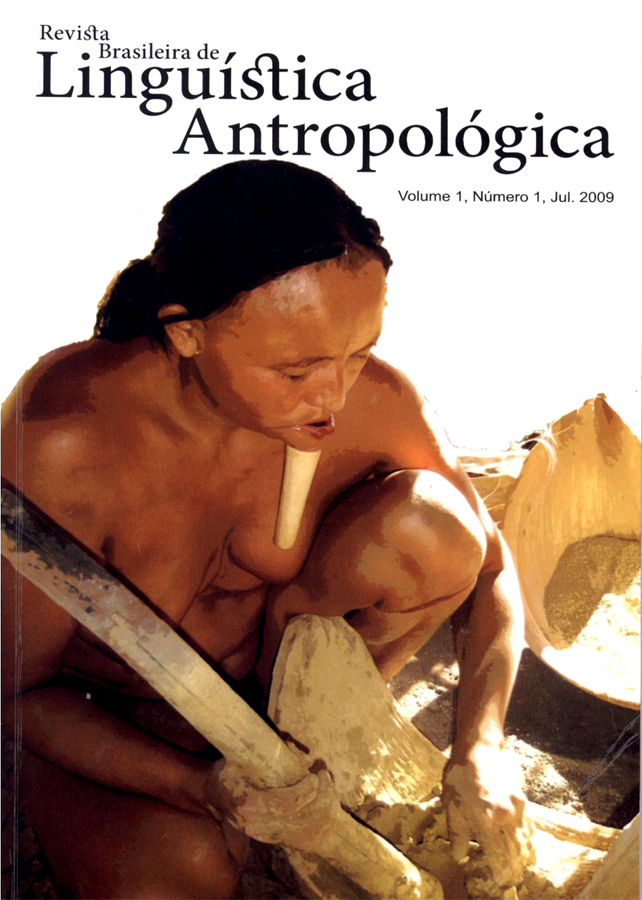CAMPBELL, Lyle & POSER, William J. 2008. Language Classification. History and Method. Cambridge: Cambridge University Press. 536 p
DOI:
https://doi.org/10.26512/rbla.v1i1.12290Keywords:
Linguística AntropológicaAbstract
CAMPBELL, Lyle & POSER, William J. 2008. Language Classification. History and Method. Cambridge: Cambridge University Press. 536 p.References
De Goeje, Claudius H. 1909. Études Linguistiques Caraïbes. Verhandlingen der Koninklijke Akademie van Wetenschappen te Amsterdam, Afdeelling Letterkunde, nieuwe reeks, deel IL, 2: 1-274.
Derbyshire, Desmond C. 1994. Clause Subordination and Nominalization in Tupí-Guaranian and Cariban Languages. Revista Latinoamericana de Estudios Etnolinguísticos, 8: 179-199.
Dixon, Robert M.W. e Aikhenvald, Alexandra Y. 1999. Introduction. In: Robert M. W. Dixon e Alexandra Y. Aikhenvald (Eds.), The Amazonian Languages. Cambridge: Cambridge University Press, pp. 1-22.
Gonzalez, Silvia & Huddart, David. 2008. The Late Pleistocene Human Occupation of Mexico. FUMDHAMentos, 7: 237-259. São Raimundo Nonato (PI): FMHA.
Guidon, Niède. 2008. Pedra Furada: uma revisão. FUMDHAMentos, 7: 379-403. São Raimundo Nonato (PI): FMHA.
Gildea, Spike. 1994. The Proto-Cariban and Tupí-Guarani Object Nominalizing Prefix. Revista Latinoamericana de Estudios Etnolinguísticos, 8: 163-177.
Kessler, Brett & Lehtonen, Annukka. 2006. Multilateral Comparison and Significance Testing of the Indo-Uralic Question. In: Forster, Peter & Colin Renfrew (eds.), Phylogenetic Methods and the Prehistory of Languages.Cambridge: McDonald Institute for Archaeological Research, p. 33-42. (prepublication draft)
Neves, Walter & Hubbe, Mark. 2008. Paleoamerican Morphology’s dispersion in the New World and its implications for the settlement of the Americas. FUMDHAMentos, 7: 205-224. São Raimundo Nonato (PI): FMHA.
Rodrigues, Aryon D. 1985. Evidence for Tupí-Cariban Relationships. In: H. Klein & L. Stark (eds.), South American Indian languages: Retrospect and Prospect. Austin: University of Texas Press, pp. 371-404.
Rodrigues, Aryon D. 1990. Grammatical Affinities among Tupí, Karíb and Macro-Jê. UnB. (ms).
Rodrigues, Aryon D. 2000. “Ge-Pano-Carib” x “Jê-Tupí-Karíb”: sobre relaciones linguísticas prehistóricas en Sudamérica. Actas del I Congreso de Lenguas Indígenas de Sudamérica (Luis Miranda, ed.), tomo I, Lima, Universidad Ricardo Palma.
Rodrigues, Aryon D. 2007. Linguística Comparativa e Pré-História dos Povos Indígenas Sul-Americanos: a hipótese Tupí-Karíb e as relações genéticas entre Tupí, Karíb e Macro-Jê. In: Silva, T.C. e Mello, H. (orgs.), Conferências do V Congresso Internacional da Associação Brasileira de Linguística. Belo Horizonte: FALE?UFMG. p. 165-176.
Ruhlen, Merrit. 1994. Is Algonquian Amerind? In: Ruhlen, M., On the Origin of Language: studies in linguistic taxonomy. Stanford: Stanford University Press. P. 111-126.
Salzano, Francisco M. et al. 2005. Genetic Support for Proposed Patterns of Relationship among Lowland South American Languages. Current Anthropology, 46, S121-129. (suppl.).
Tamm, E.; Kivisild, T.; Reidla, M.; Metspalu. M.; Smith, D.G.; et al. 2007. Beringian Standstill and Spread of Native American Founders. PLoS ONE 2(9): e829.
Watanabe, S.; Ayta, W.E.R.; Etcheverne, C.A.; Ccallata, H.S.J.; Gennari, R.F. 2008. Peopling Brazil took place much earlier than in North America? FUMDHAMentos, 7: 182-190. São Raimundo Nonato (PI): FMHA.
Downloads
Published
Issue
Section
License
Copyright (c) 2012 Revista Brasileira de Linguística Antropológica

This work is licensed under a Creative Commons Attribution 4.0 International License.
Authors who publish in RBLA agree to the following terms:
a) Authors maintain the copyright and grant the journal the right of first publication, and the work is simultaneously licensed under the Creative Commons Attribution License, which allows the sharing of the work with recognition of the authorship of the work and initial publication in this journal.
b) Authors are authorized to assume additional contracts separately, for non-exclusive distribution of the version of the work published in this journal (eg, publish in an institutional repository or as a book chapter), with recognition of authorship and initial publication in this journal.
c) Authors are allowed and encouraged to publish their work online (eg, in institutional repositories or on their personal page) at any point before or during the editorial process, as this can generate productive changes, as well as increase impact and citation of the published work.










